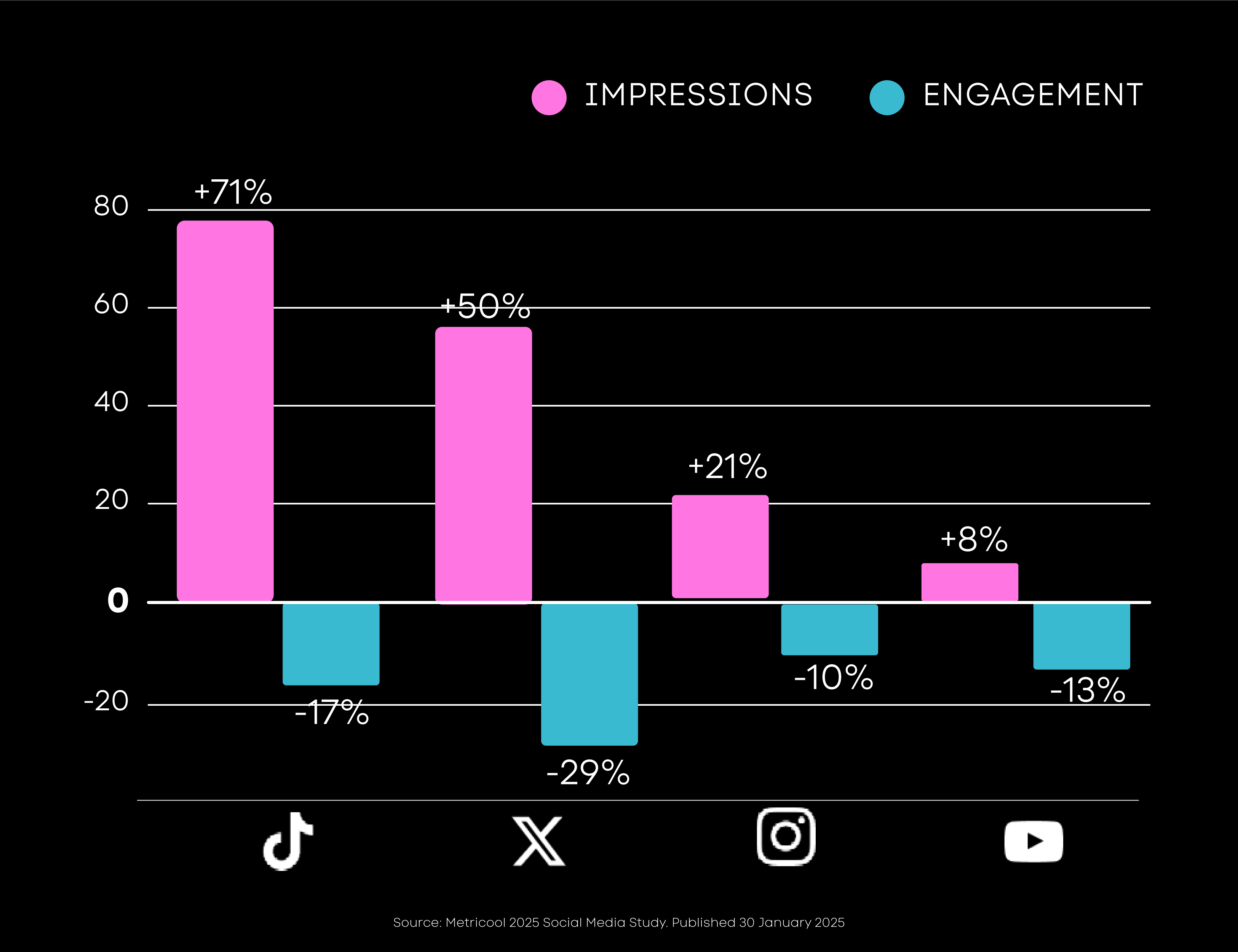Social has been a bit… weird recently. TikTok was banned for less than a day. Instagram is full of bot content. Shorts feels like a totally different internet. And Meta is shifting to a community notes model.
The question of the day: “Where is the vibe I used to love on social?”
Consumers across platforms are voicing a “vibe shift” – that social feels significantly flatter, more boring, and more cluttered than ever. And it’s driving them to spend less time on platforms. For the first time ever, daily social screentime averages decreased in 2024 (statista).
But at the same time, we’re actually consuming more content in less time. What’s more, we’re engaging with even less content than ever. It holds true for almost every major platform:

One might attribute the impression / engagement divorce to simple overwhelm. Or, as AI populates more content into our feeds, it could be we’re trusting the content we see less and less.
The Big Shift
But there’s a bigger shift here – something at the core of social’s purpose. Ella, a Gen Z project manager, puts it well:
“It doesn’t feel personal anymore. When I first got Insta, I only used it to post pictures and stay connected to friends and family. Now, all I do is doomscroll and stress – we’re no longer being social and creative with social media.”
Ella’s right. We’re no longer being social on social.
We’re shifting from the personal to the professional.
From the common voice to the corporate voice.
Instead of discovering content which invites us into a community, our feeds deliver content which offers us a chance to buy. Instead of excitedly stumbling onto a new product, we cringe or groan every time the TikTok shop button pops up. Influencer culture itself has added fuel to the fire, diluting content from sharable to shoppable.
The core function of social media platforms changed.
Social’s no longer a city park. It’s a mall.
How Brands Should Engage
At its best, the mall model offers brands more customers in more places, infrastructure to sell to those customers, and runway to build stronger consumer relationships. But at its worst, the mall model creates way too much noise, overwhelms consumers into indifference, and demands vast ecommerce investment from brands to pay to play.
Venturing into this model without a nuanced approach to brand building and cultural fluency risks vastly devaluing creative and marketing investment in social, which is set to rise 55% in 2025 (WARC).
The most important part of this shift is a changing consumer mindset, from active to passive. Social is now a place built to passively watch content – more similar to the way consumers engage broadcast or OLV. The passive mindset means lower-funnel messaging tactics (“buy now” / “click here” / “learn more”) won’t break through.
Instead, entertainment will. People don’t want to hear about “your newest product” – but they do want to hear about “a hidden gem.” Entertainment is why Duolingo killed the owl. It’s why Away makes lo-fi, relatable content to build its brand. Even the TSA is picking up a more entertaining approach.
The brands who win in contemporary social aren’t the brands shilling products. They’re the ones acting natively and creating timely, lofi content which feels like the ‘fun’ part of someone’s feed – not a paid social post.
So as marketers, strategists, creatives, and creators, the question at hand isn’t “how do we connect on social?” anymore. Now, it’s “how do we entertain?”







